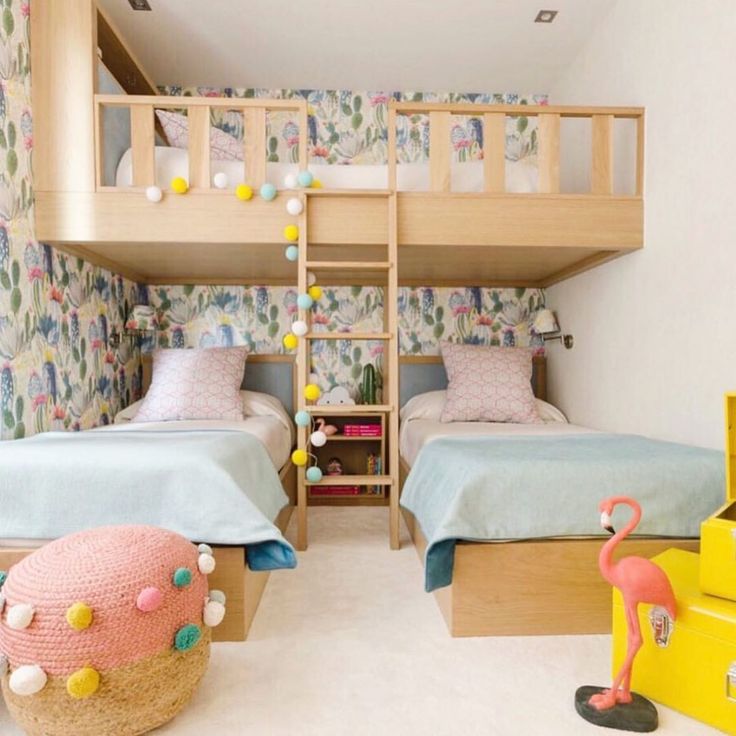Many growing families eventually come to one unavoidable conclusion: they’re running out of space in their current home. Some choose to tackle this issue with major renovations, which can be one of the most expensive costs of home ownership. Though many think it would be easy to tap into their home equity to fund projects like renovations, high interest rates make this a more expensive option these days.
While renovations are expensive and disruptive, moving is even tougher. Even if you use a discount real estate broker, you’re still stuck with moving expenses and the various transaction costs of selling your present home and buying a new one—not to mention the time and effort it takes.
Often, the easiest and most practical option is having kids share a bedroom. While that might sound like a recipe for clutter and squabbling, there are time-tested ways to make it work. Let’s explore some of the best strategies for creating harmonious shared bedrooms for kids.
Make it a Family Affair
If you want to make the room’s future inhabitants happy, let them have a say in its look and feel. Get the kids to share their thoughts on color, furniture, lighting, and other design aspects. Even if you don’t use all their suggestions, including them in the process helps create a feeling of ownership in the final product. At the same time, it offers siblings a teachable moment about compromise and working together.
Don’t Overlook Color
Many parents are inclined toward using vivid colors in children’s areas, but some choices can be so stimulating that they’re counterproductive. For example, red is known to quicken the heart rate of people who see it. On the other hand, pink has proven to be calming, though not all children may be excited about a pink bedroom.
The safest option is a neutral color palette. Gray, beige, or off-white are aesthetically pleasing and inoffensive. Avoid using pure whites, which tend to show staining quickly and noticeably.
Set Some Ground Rules
One of the most common pitfalls of sharing a bedroom is the fighting that sometimes breaks out over issues of ownership. These can include one child using another’s toys or leaving a mess behind for the other to clean up. Parents should lay down clear ground rules about how the shared space can be used.
A designated play zone can prevent a lot of messes, and if the kids are possessive about their favorite toys, give them each their own private storage space that the other isn’t allowed to access.
Get the Beds Right
If you have the room, placing single beds on opposite ends of the room is among the best arrangements. In addition to helping develop an area of their own, putting them on opposite sides of the room at bedtime can also encourage quiet and calm.
If you’re short on space or think it’s better used for other things, bunk beds are a popular and efficient way to take advantage of vertical space. Those who can’t decide or don’t have a strong preference can simply ask the kids, who are rarely shy about sharing their favorite option.
Give Them Somewhere to be Proud of
A very effective way to make the children feel at home in their new room is to have a “pride” or “trophy case” area where you display their awards, trophies, and certificates. It’s a welcoming gesture that also reminds them of their accomplishments and skills. Still, try to ensure each child has proportionate awards or recognition to avoid fights or resentment.
Construct Hideaways and Quiet Spaces
As parents know, small children can change moods on a dime. Give them spaces they can retreat to and gather themselves or just get away from the rest of the family for a little while as they read a book or play a game. Develop a small hideaway space for each child, which can be as simple as a bed tent. You might find that the space quickly becomes their favorite place to spend time.
Let Them Make Their Mark
It’s their room, so give each child a designated space to customize. Many parents use the section of the wall next to their bed. Let them paint a small accent wall or mural, place stickers or posters, or do whatever their heart desires. It can go a long way toward making the room feel like “theirs” and not just a shared space with siblings.
How to Choose the Best Play Structures for Small Yards
Lessons on Home Safety with Kids
Growing from Young Child to a Teenager .. How Best to Maximize Kids Rooms


